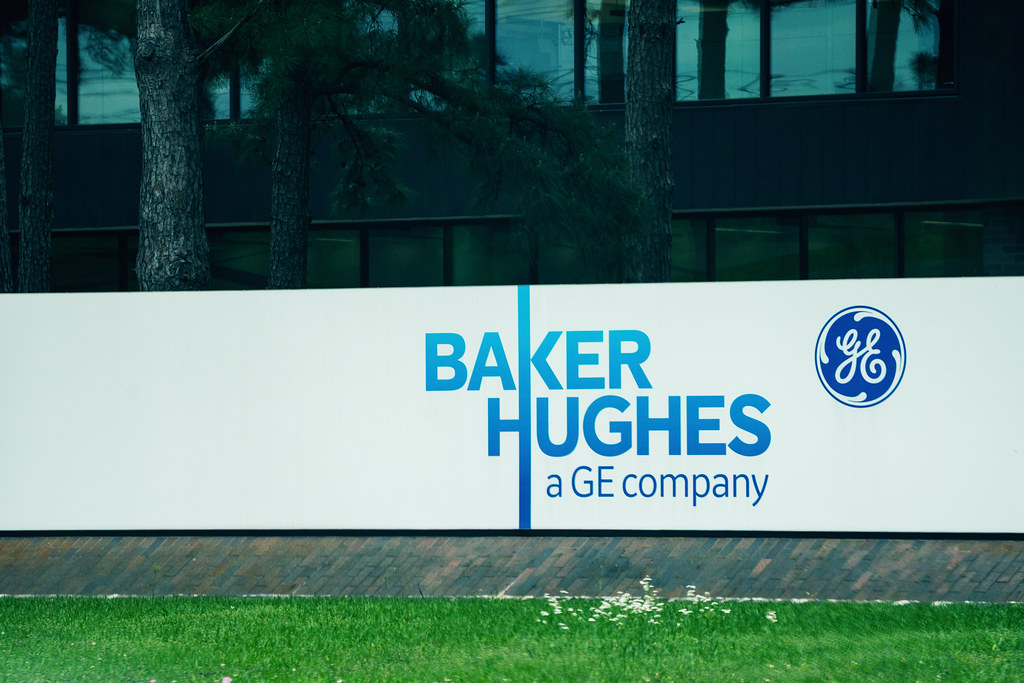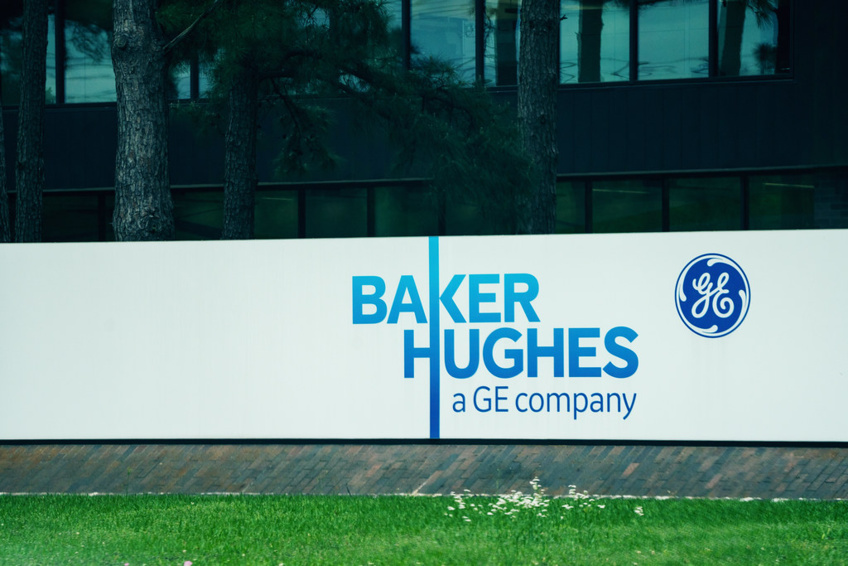Meet Jonny MacGregor: Baker Hughes' Technology Leader for Druck Precision Sensors & Instrumentation.
Jonny started as a Lead Mechanical Engineer in the subsea department, designing subsea sensors that regulate flow of oil and gas from wells. Jonny oversees teams that design brand-new products or modifications to suit a particular customer's needs, with over 100 projects and seven major product developments underway.
What led you to work in the sensor technologies space?
Jonny started as a Lead Mechanical Engineer in the subsea department, designing subsea sensors that regulate flow of oil and gas from wells. Jonny oversees teams that design brand-new products or modifications to suit a particular customer's needs, with over 100 projects and seven major product developments underway.
What led you to work in the sensor technologies space?
JONNY MACGREGOR: “I am currently the Technology Leader for the Druck Precision Sensors & Instrumentation product line, part of Baker Hughes’ Industrial & Energy Technology business segment.”
“I started as a Lead Mechanical Engineer in the subsea department. We were designing subsea sensors to go on “Christmas Trees” (the systems of valves and fittings that regulate flow of oil and gas from wells) and as a mechanical engineer, I found the challenges of that really fascinating, given all the different loads and the relentlessness of the environment.”
“I started as a Lead Mechanical Engineer in the subsea department. We were designing subsea sensors to go on “Christmas Trees” (the systems of valves and fittings that regulate flow of oil and gas from wells) and as a mechanical engineer, I found the challenges of that really fascinating, given all the different loads and the relentlessness of the environment.”
“It all progressed from there and I’ve had the opportunity to work in a broad range of sectors from just one company - from the oilfield services space all the way through to gas, hydrogen
and industrial applications such as aerospace, electrical manufacturing and meteorology.”
Can you describe your typical day?
JONNY MACGREGOR: We are at the forefront of innovation in precision pressure measurement technologies and instrumentation, and our focus is on developing new products that align with our strategy and support the energy transition.
As you might expect, this requires an immense amount of cross-collaboration. Our expertise lies in creating technology that performs exceptionally well in the most demanding environments, including the highest altitudes, the deepest oceans, and even outer space, across a diverse range of industries. Our customers rely on our products to provide insights into asset performance, enhance safety, increase efficiency, and improve fuel economy, regardless of temperature, terrain, climate, vibration, speed, or altitude.
My role as a leader in this product line involves overseeing the design of brand-new products or modifications to existing ones to meet specific customer needs. We currently have seven major product developments in progress and over 100 projects for individual customers, which means a lot of programs, projects, and meetings.
As a member of the leadership team, I also contribute to other aspects of the business, including operations, services, finance, and marketing. Collaboration is vital to developing precision technology and ensuring that we make sound business decisions. I find the responsibility and variety of my job to be incredibly fulfilling.
Sensors are critical for the Aerospace industry. How do you see the road ahead?
JONNY MACGREGOR: For two decades now, we've been expanding our presence in the aerospace market and have become a prominent player with over 500,000 sensors soaring high in the sky. You'd be hard-pressed to board a flight without one of our sensors dutifully performing a crucial function, whether it's controlling the plane's undercarriage or flaps, monitoring cabin air pressure, fuel or engine oiling system, among others.
In aerospace, the importance of tailoring products to the specific requirements of each customer cannot be overstated. However, we're constantly seeking ways to streamline the process by leveraging our vast portfolio of standard designs to create bespoke products. Taking advantage of the slowdown in aircraft construction brought on by the pandemic, we seized the opportunity to develop a new sensor platform that reduces the need for high levels of customization and speeds up time-to-market. This innovative platform is set to take flight at the Paris Airshow launch event in June this year.
In this industry, the level of scrutiny and testing required to ensure a product's reliability and performance is unparalleled because there's no room for error at 40,000-60,000 feet above ground. By upgrading our standard platform to incorporate tested and approved products, we can simplify and expedite the entire process.
How are Baker Hughes sensors making an impact on the industry?
JONNY MACGREGOR:: In the aerospace industry, reliability stands as the foremost crucial requirement since it directly affects the safety of passengers aboard the aircraft. However, beyond ensuring safety, our technology offers an additional advantage of enhancing customers' operations. Regardless of the industry, whether it's computer chip manufacturing that relies on pressure-based mass flow controllers or running turbines, our sensors provide vital data that can optimize various processes. These optimizations can result in higher yields, reduced operational costs, better fuel economy, or even lower emissions.
How are sensors and instrumentation technologies contributing to the energy transition?
JONNY MACGREGOR: The energy transition faces significant challenges, particularly the reduction of energy usage, which will contribute to more affordable energy. To achieve this, enhanced fuel efficiency is critical to lowering equipment running costs. However, improving efficiency requires access to data-driven insights. Pressure and temperature are the two most crucial measurements in this regard.
Accurate sensing technology is essential to capture small variations in data, which can be used to make informed optimization decisions. Our high-fidelity pressure sensors, for instance, offer valuable insights to optimize gas turbine performance and fuel efficiency, ultimately leading to reduced emissions.
What is the play between sensors and hydrogen compatibility?
JONNY MACGREGOR: Making effective optimization decisions is particularly crucial when dealing with unpredictable gases like hydrogen.
In hydrogen applications, pressure measurement can be as straightforward as verifying the amount of hydrogen in a storage tank, or as complex as controlling fuel supply to gas turbines, or performing regular self-testing for system leaks. Accurate data is indispensable across all these applications.
However, traditional hydrogen sensors face two significant challenges. Firstly, hydrogen can permeate or move through thin metal, leading to its escape or entry into the sensing element, causing issues. Secondly, it can cause embrittlement across various materials, making sensors that are not designed for hydrogen environments prone to failure or reduced accuracy.
Hence, we are developing innovative techniques - materials, coatings, and manufacturing refinements - to address these concerns and ensure that the performance of our technology remains consistent over time.
Since car racing is your hobby, what is the impact of sensor technologies on motor sports?
JONNY MACGREGOR: The Druck product line boasts a long and impressive history of success in every level of motorsport, while I too have enjoyed triumphs in the British Endurance Championships. As previously stated, our sensors are renowned for their reliability in even the harshest of environments. In the world of motorsport, the adage "to finish first, first you must finish" is particularly relevant, and without reliable components, a car simply cannot complete a race. Given that racing events can demand six hours of continuous high-performance driving, the reliability of each component is critical to success.
For instance, our pressure sensors play a vital role in measuring the air pressure entering the engine. The accuracy of this data has enabled us to analyze and improve the design of the air intake system, ultimately leading to increased power output from the car. Additionally, calibration and testing instrumentation is imperative in ensuring sensor accuracy and the reliability of the data obtained.
How will the energy transition impact motorsport ?
JONNY MACGREGOR: While many view motor racing as an environmentally unfriendly sport, it's important to recognize the role it plays in pushing the boundaries of combustion engine and technology capabilities. High-level motorsport, like Formula One, drives innovation and every year engines become more fuel efficient, and designers extract more power from smaller engines. The technologies developed in Formula One trickle down to road vehicles and help reduce carbon emissions from everyday driving. Additionally, the sport is exploring alternative fuels such as hydrogen.
Moreover, the data analytics side of motorsport is being shared across industries. Companies like McLaren are using their data analytical capabilities to help businesses in other sectors. In Formula One, data is critical to the competitiveness of the cars, and the strategies derived from the data during races are what give them an edge. This expertise is being shared and transferred to other industries, providing a valuable skill set for optimizing performance and making informed decisions.
What aspect of the Baker Hughes mission to advance energy excites you the most?
JONNY MACGREGOR: It brings me great satisfaction to be a part of the team that designs, develops, and introduces innovative technologies and solutions that contribute to the energy transition. Our products are utilized in a wide range of applications that make a positive impact on the world. They support life-saving flood defenses, aid in weather forecasting for smart cities, help in providing clean water, and increase industrial production efficiency, among many other areas. It is an honor to be a part of Baker Hughes, where we are supporting the energy transition and driving progress on a larger scale.


 Interview with Baker Hughes' Technology Leader for Druck Precision Sensors & Instrumentation on the Impact of Sensors in Aerospace and the Energy Transition
Interview with Baker Hughes' Technology Leader for Druck Precision Sensors & Instrumentation on the Impact of Sensors in Aerospace and the Energy Transition





 Companies
Companies